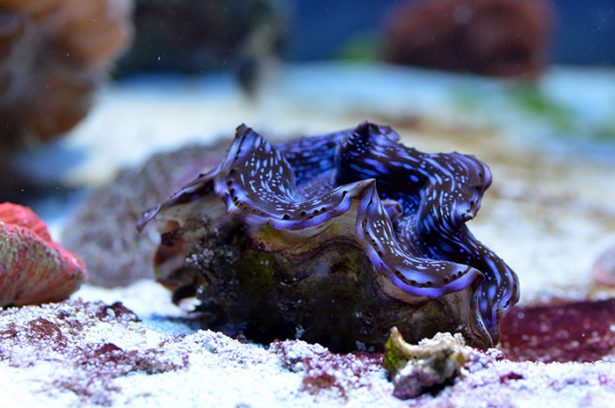Electrophorus electricus
Order: Gymnotiformes | Family: Gymnotidae
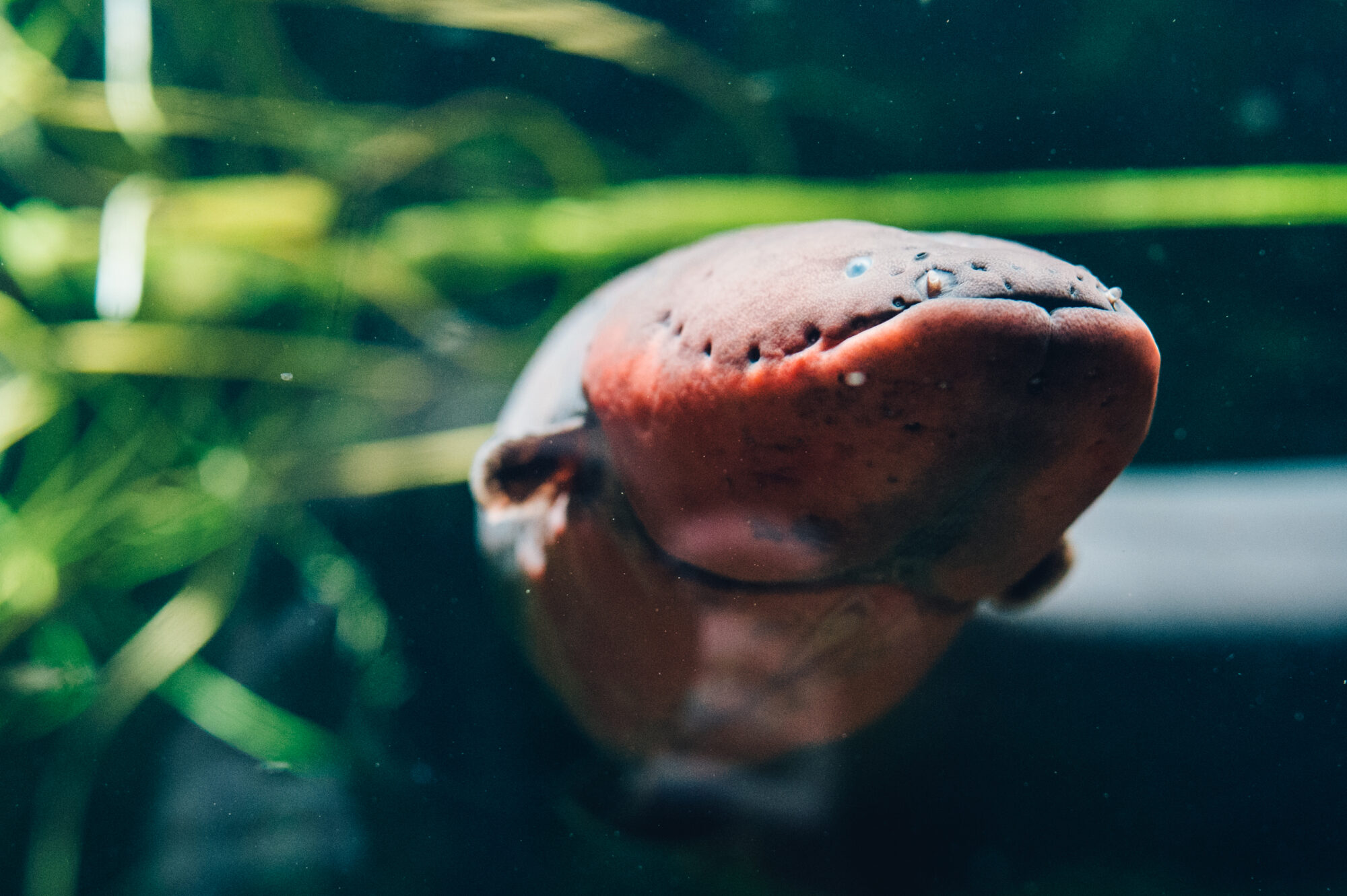
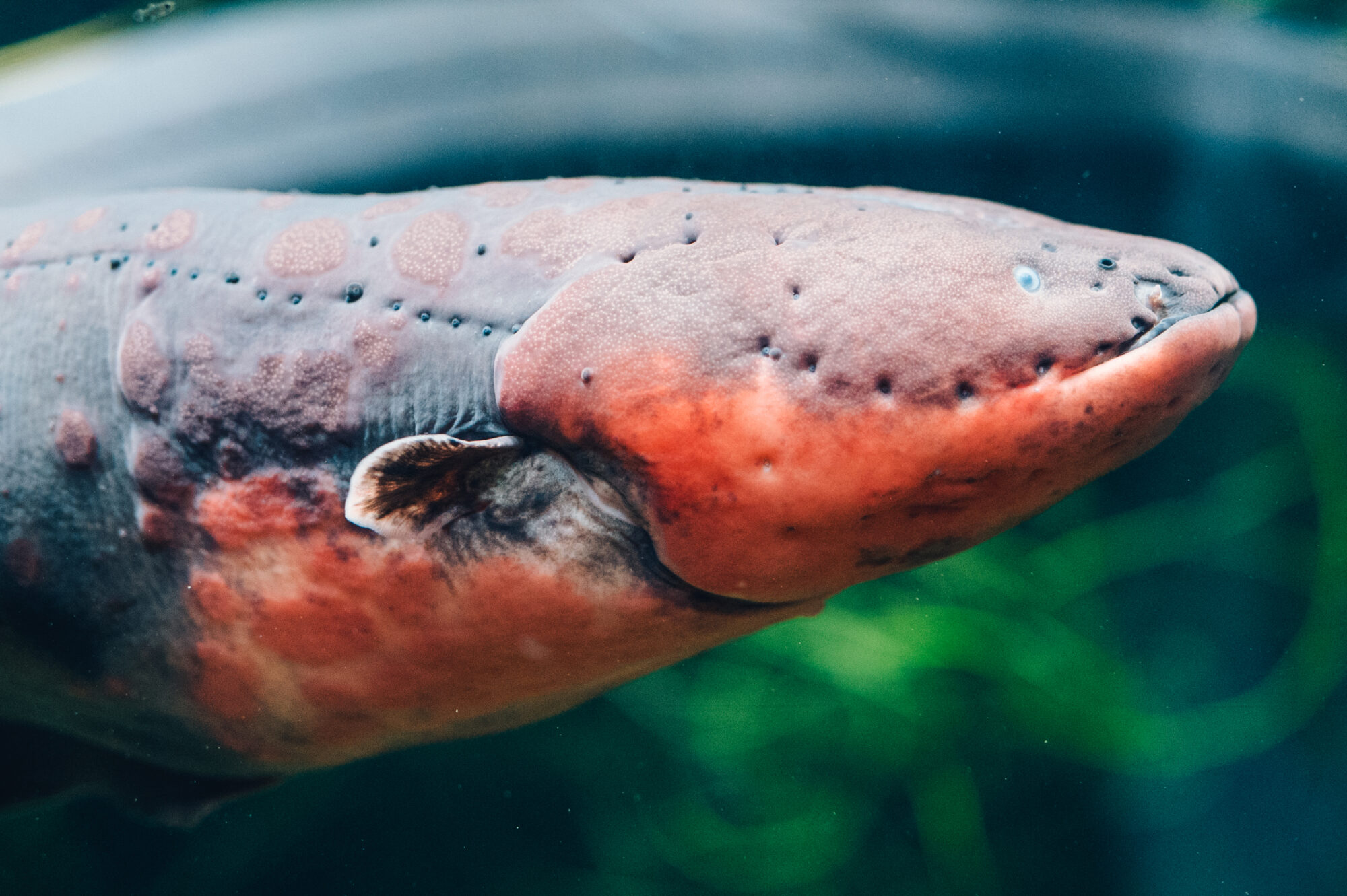
This fish is commonly known as the electric eel. The name comes from the characteristic body shape that resembles an eel, but this fish is actually more closely related to the families Cyprindae and Siluriformes. These fish can be found in the waters of the Amazon River and the Orinoco River. They live in muddy currents enriched in salts and minerals that conduct electricity really well.
They have a positive charge near their head and a negative one close to their tail end. They produce an electric charge at the front of their body that comes back through the water to the tail. This creates a closed circuit that has the shape of an electric cloud which paralyzes or kills everything around.
There are electrolytes on the body of this fish, which receive electric stimuli from their surroundings. This is called electroreception. With the use of their special Hunter and Sachs organs, they send two types of electric discharges. Sachs’ organ is used as radar for electrolocation. The lower voltage of this organ helps them move through the muddy waters, which is especially useful because they lose their sight with age. Sachs’ organ is also used for sensing potential prey and partially blinding it, if the prey is small. This organ also plays a major role in finding a partner. When attacking larger prey, the eel activates Hunter’s organ, which produces a stronger discharge.
This fish can regulate the strength of discharges according to its needs and the size of the prey. The strongest discharge ever captured was in a zoo in the United States and measured 600 V.
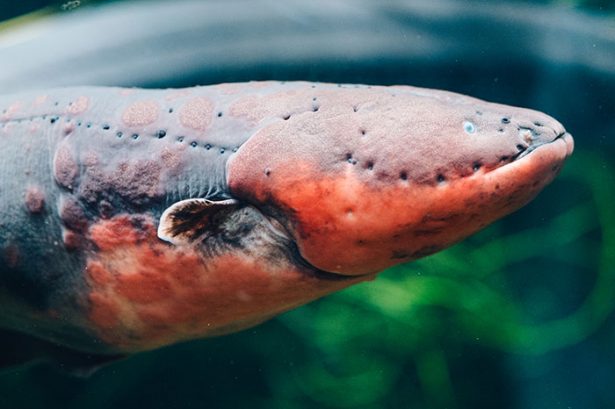
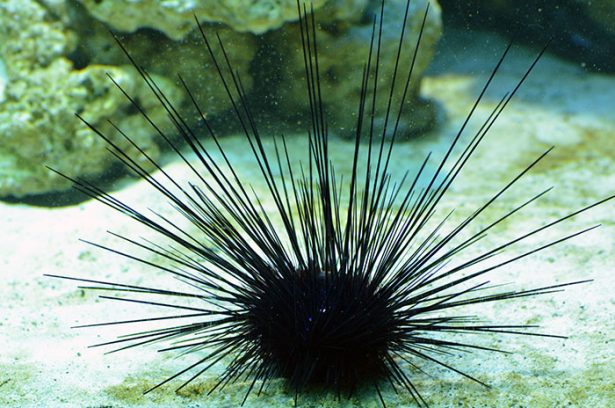
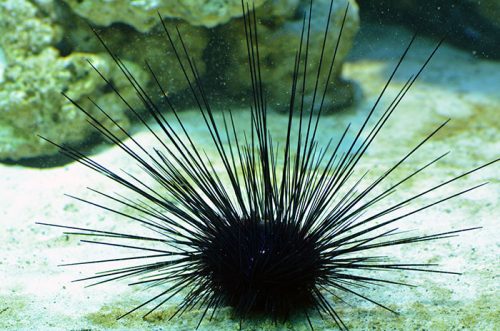 Diadema setosum
Diadema setosum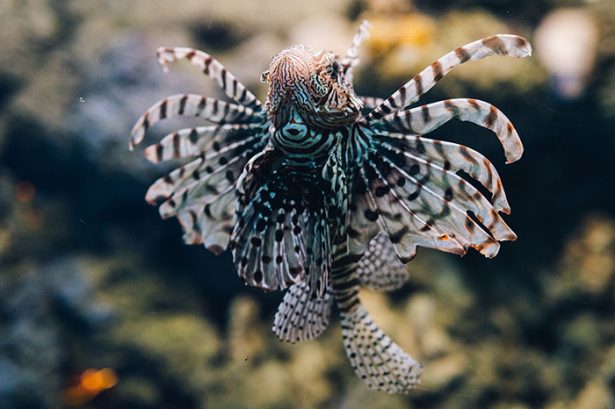
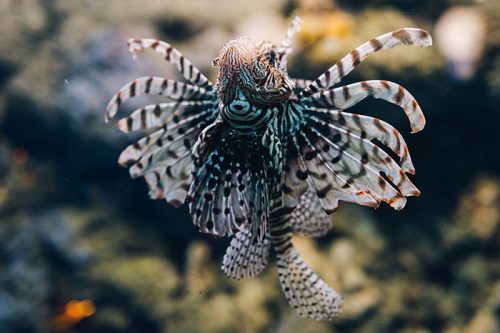 The Red lionfish inhabits the western Pacific, from southern Japan to Australia and the Philippines. Occurs on the hard bottom on the outskirts of reefs and lagoons. It can be found already at the water surface and at a depth of 175 meters. This fish lives about 10 years, reaching a body length of up to 30 cm. Its food are crustaceans and fish. The Red lionfish uses different strategies for obtaining food. Due to the fact that its swim bladder is surrounded by special muscles, it can control her level in the water column and change the center of gravity of the body so as to take a precise position before attacking the victim. In addition, it flushes invertebrates from the bottom using pectoral fins. Additional muscles around the swim bladder also allow it to turn upside down and freeze under the rock shelves, where it waits for the victim. It is mainly active at night and usually hides during the day.
The Red lionfish inhabits the western Pacific, from southern Japan to Australia and the Philippines. Occurs on the hard bottom on the outskirts of reefs and lagoons. It can be found already at the water surface and at a depth of 175 meters. This fish lives about 10 years, reaching a body length of up to 30 cm. Its food are crustaceans and fish. The Red lionfish uses different strategies for obtaining food. Due to the fact that its swim bladder is surrounded by special muscles, it can control her level in the water column and change the center of gravity of the body so as to take a precise position before attacking the victim. In addition, it flushes invertebrates from the bottom using pectoral fins. Additional muscles around the swim bladder also allow it to turn upside down and freeze under the rock shelves, where it waits for the victim. It is mainly active at night and usually hides during the day.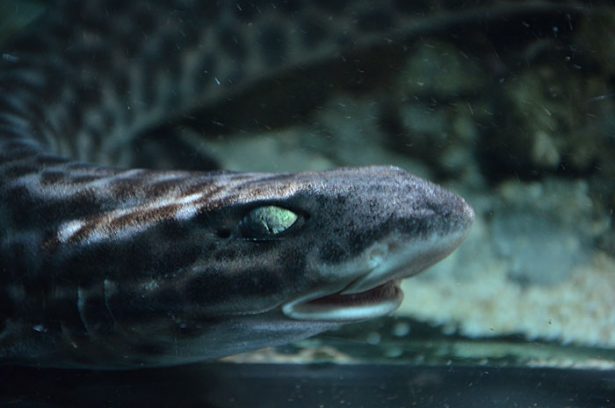
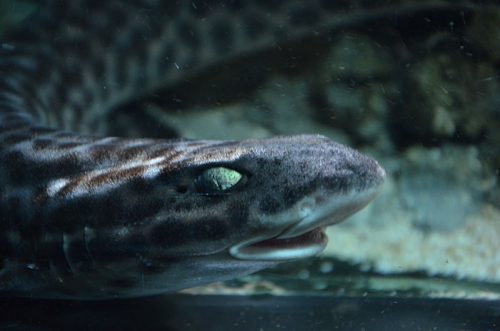
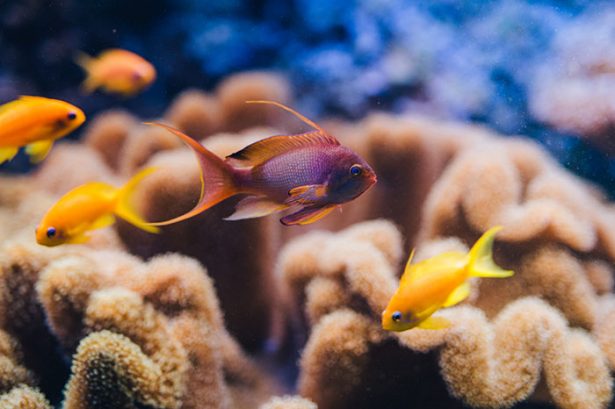
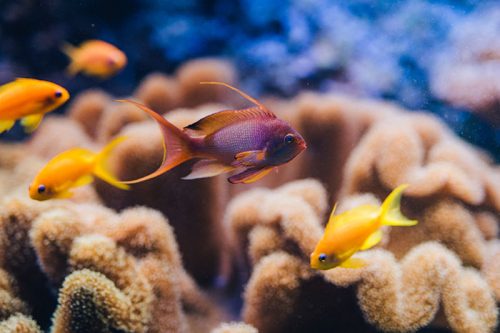 Pseudanthias squamipinnis
Pseudanthias squamipinnis